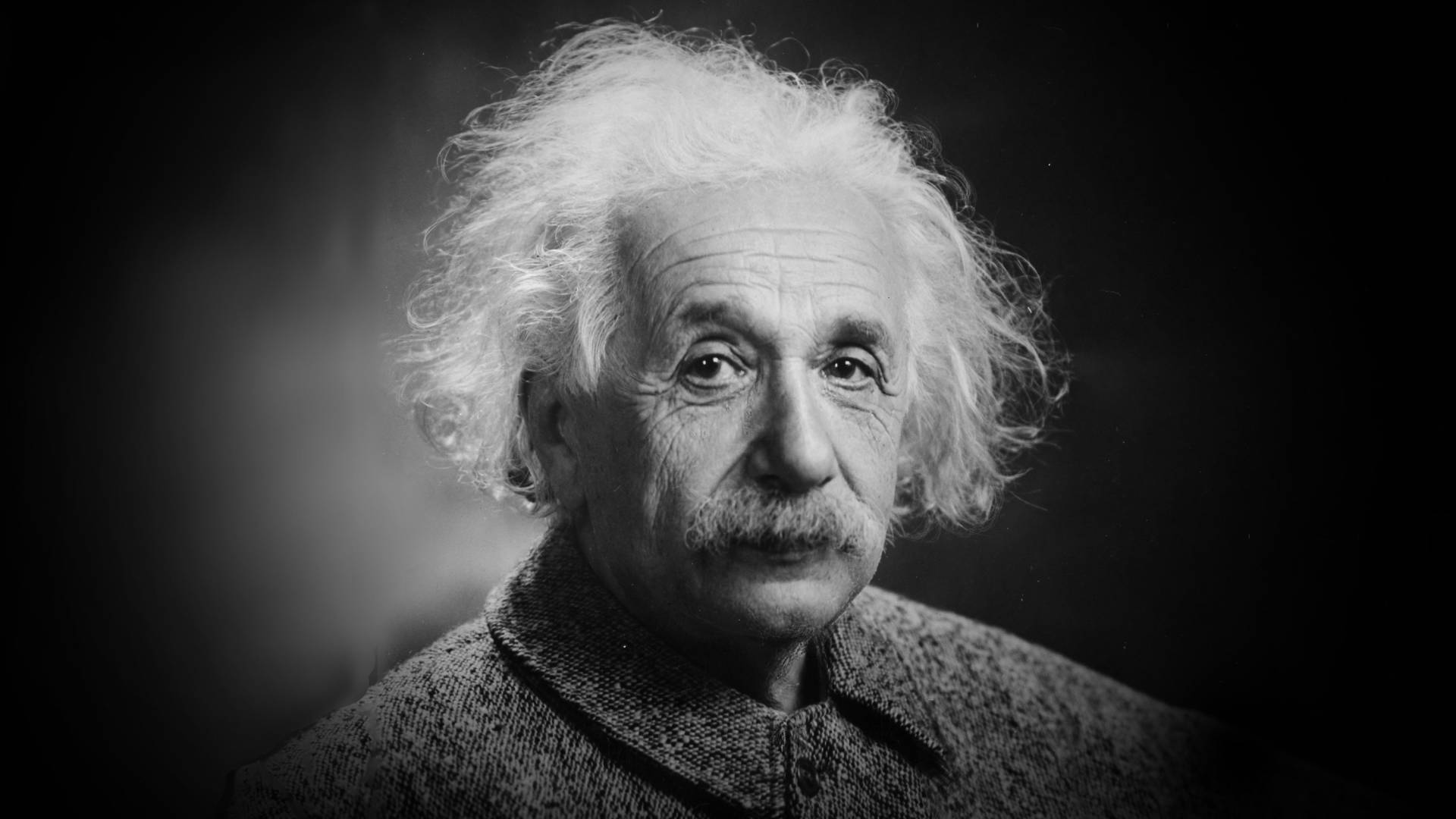Last Updated on 4 June 2023 by Biographybliss Team
One of the most influential scientists of the 20th century, Albert Einstein is best known for his groundbreaking theories in theoretical physics. Born in Germany in 1879, Einstein began working at the Swiss Patent Office after finishing his studies, where he published several papers on physics in his spare time.
He gained wider recognition with his papers on the theory of special relativity and the famous equation E=mc². Einstein’s ideas and contributions continue to shape the world of science today.
- How his ideas shape the world today
- Early Life
- Childhood and Education
- Relationship with Mileva Maric
- Move to Switzerland and Acquiring Swiss Citizenship
- Scientific Achievements
- Theory of Relativity
- Who was Albert Einstein, and what did he do in his life?
- What is the Special Theory of Relativity, and how did it change our understanding of space and time?
- What is the General Theory of Relativity, and how did it revolutionize our understanding of gravity?
- What was Einstein’s role in the development of nuclear energy and weapons?
- What was Einstein’s stance on philosophy and the nature of the universe?
How his ideas shape the world today
Albert Einstein is widely recognized as one of the most brilliant thinkers of the 20th century. His groundbreaking ideas continue to shape modern technology, impact various fields of study, and provide new insights into the nature of the universe. In this article, we will explore how his ideas shape the world today.
Einstein’s most famous contribution to science is his theory of relativity. This revolutionary theory proposed that the laws of physics remain the same for all non-accelerating observers and that the speed of light is constant regardless of the observer’s motion. It radically altered our understanding of space, time, and the universe and opened up new fields of scientific exploration.
One practical application of Einstein’s theory of relativity is GPS technology. GPS satellites orbit the earth at a distance of about 20,000 kilometers. To accurately predict their positions and synchronize their clocks, engineers must account for the effects predicted by Einstein’s theory, such as time dilation and gravitational redshift. Without the accuracy provided by this theory, GPS technology would be impossible.
Another significant application of Einstein’s theories is nuclear energy. Einstein’s famous equation E=mc² revealed that mass and energy are interchangeable, leading to the development of nuclear weapons and nuclear power plants. His work also paved the way for medical imaging technologies such as X-rays and MRI scans.
Einstein’s influence extends beyond science and technology. He was an outspoken activist for civil rights and peace. He famously declared that “the only way to prevent war is not to wage one,” and he was a leading advocate for non-violent resistance and disarmament. Einstein also spoke out against racism, anti-Semitism, and nationalism and championed human rights for all people.
In conclusion, Einstein’s contributions to science have had a profound impact on modern technology and various fields of study. His theory of relativity continues to provide new insights into the nature of the universe and revolutionize our understanding of space and time. His work opened up new possibilities in nuclear energy, medical imaging, and GPS technology. Additionally, his broader influence on society as a human rights advocate and peace activist remains an inspiration to this day.
Early Life
Albert Einstein was born in Ulm, Germany, in 1879. Growing up, Einstein had a natural curiosity and fascination with the world around him. He was a quiet child who preferred to spend his time exploring and pondering the mysteries of science and nature.
Despite his early interest in mathematics and science, Einstein struggled in school and had difficulty following the traditional, structured approach to learning. However, his intelligence and creativity could not be contained, and he would go on to become one of the most influential scientists of the 20th century.
Childhood and Education
Albert Einstein’s fascination with science can be traced back to his childhood experiences. Growing up in a family of middle-class German Jews, Einstein was always curious about the world around him. It was his childhood interest in the invisible forces of nature that eventually led him down the path to becoming one of the most renowned physicists of the twentieth century.
At a young age, Einstein discovered a geometry book and was immediately intrigued by the subject. He became obsessed with finding the underlying principles behind geometry and how it interacted with the physical world. This curiosity for mathematics and science continued to grow as he got older.
Einstein’s education was disrupted by his family’s financial struggles, which led to his enrollment at a Swiss school where he was not considered a model student. However, with the help of a tutor, Einstein dived into higher mathematics and philosophy, becoming a self-taught student in these subjects.
Einstein’s insatiable thirst for knowledge led him on a decade-long quest to understand Einstein’s clocks and the question of what a light beam would look like if he could run alongside it. He eventually published papers on the special theory of relativity, which redefined our understanding of space and time.
Overall, Einstein’s childhood experiences, interest in science, and education disruption alongside his tutor’s influences played a significant role in shaping his ideas and setting him on the path to revolutionizing the field of theoretical physics.
Relationship with Mileva Maric
Albert Einstein’s relationship with Mileva Marić was an important part of his personal life and professional career. They both met at the university in Zurich, where they were studying to become physicists.
Marić was the only woman in the physics program and often faced discrimination from both her male peers and professors. However, she was known to be a talented mathematician and assisted Einstein with his research during their studies.
Controversy surrounds Marić’s contributions to Einstein’s work, with some historians suggesting that she had a significant role in the development of his theories. Despite this, their marriage faced several challenges, including the birth of a daughter out of wedlock and conflicts with Einstein’s family.
Einstein and Marić eventually got married in 1903 and had two sons. However, their relationship became strained over time, with Einstein frequently traveling and devoting more time to his work than his family. Marić also experienced health issues, including depression and a nervous breakdown.
After years of separation, Einstein and Marić finalized their divorce in 1919. The reasons for their divorce are not entirely clear, but it is believed that their differing views on their children’s education and Einstein’s growing fame and success played a role.
Despite their separation, Einstein continued to support Marić financially and emotionally, even offering her the rights to his Nobel Prize if needed.
Move to Switzerland and Acquiring Swiss Citizenship
Albert Einstein, born in Germany in 1879, moved to Switzerland in 1895 to avoid military service and due to the political climate in Germany at the time. Switzerland was known for its neutrality and provided a safe haven for Einstein to continue his education.
In Switzerland, Einstein attended the Swiss Federal Polytechnic School in Zurich, where he graduated with a degree in physics in 1900.
Einstein became a Swiss citizen in 1901, renouncing his German citizenship. This decision was influenced by the German government’s policy of imposing military service on its citizens, as Einstein was a pacifist and did not believe in war. Switzerland’s neutrality in World War I and its democratic values also influenced Einstein’s decision to become a Swiss citizen.
During his time in Switzerland, Einstein continued his scientific work and made significant contributions to the field of theoretical physics. In 1905, he published the paper on the special theory of relativity, which challenged Isaac Newton’s theory of light and motion. This theory revolutionized the field of physics and led to a better understanding of the behavior of light and the universe as a whole.
Einstein’s time in Switzerland was also marked by important scientific discoveries and accolades. He was awarded a doctorate from the University of Zurich in 1905 and a fellowship to work at the University of Bern. In 1908, he was appointed as a professor of theoretical physics at the University of Bern. Einstein also received the Nobel Prize in Physics in 1921 for his work on theoretical physics.
Einstein’s relationship with Mileva Maric, whom he met while attending the Swiss Federal Polytechnic School, also played a role during his time in Switzerland. It has been suggested that Maric had a significant role in the development of Einstein’s theories, including the theory of relativity. However, their marriage faced several challenges during this time, including conflicts with Einstein’s family and the birth of a daughter out of wedlock.
In conclusion, Albert Einstein’s move to Switzerland and acquisition of Swiss citizenship allowed him to continue his scientific work and make significant contributions to the field of theoretical physics. His time in Switzerland was marked by important scientific discoveries, accolades, and a complicated relationship with Mileva Maric.
Scientific Achievements
Albert Einstein is widely regarded as one of the most influential scientists of the 20th century. His groundbreaking ideas and insights greatly influenced the course of modern physics, and he is perhaps best known for his seminal work on the theory of relativity.
Einstein’s intellectual curiosity and deep understanding of the natural world led to a number of other significant scientific achievements, many of which continue to shape our understanding of the universe today.
Theory of Relativity
Albert Einstein’s Theory of Relativity is considered one of the most groundbreaking scientific theories of the 20th century. It consists of two main components: the Special Theory of Relativity and the General Theory of Relativity.
The Special Theory of Relativity, published by Einstein in 1905, fundamentally changed our understanding of physics by introducing the idea that observers in relative motion experience time differently.
According to the Special Theory of Relativity, the time between two events depends on the relative motion of the observers. This means that two observers, moving at different speeds, will each experience time differently. Time dilation, as it is called, is the idea that time slows down the faster an object moves. This concept has been confirmed through experiments, such as those involving atomic clocks on high-speed jets.
In addition to the concept of time dilation, the Special Theory of Relativity also introduced the idea that moving through space can also be thought of as moving through time. This concept is referred to as space-time, and it has led to new ways of understanding the relationship between time and space.
The General Theory of Relativity, published by Einstein in 1915, extended the concepts of the Special Theory to account for gravity’s relationship to space-time. According to the General Theory of Relativity, massive objects like planets and stars warp space-time around them. This is what causes objects to fall towards Earth and what keeps planets in orbit around the sun.
The theories of relativity have far-reaching implications in modern technology, especially in the development of GPS. GPS satellites use the theories of relativity to make accurate measurements of time and position. Without accounting for the time dilation effects of the satellites, GPS would be inaccurate by about 10 kilometers per day.
In summary, the Theory of Relativity is one of the most important scientific theories of all time. The Special Theory of Relativity introduced the concepts of time dilation and space-time, while the General Theory of Relativity explained the relationship between gravity and space-time. The principles of relativity have implications in modern technology, making them more than theories of physics but now a foundation field in the technological advancements we see in the world today.
FAQs
What is the Special Theory of Relativity, and how did it change our understanding of space and time?
The Special Theory of Relativity, first published by Einstein in 1905, introduced the concept of time dilation, which means the faster an object moves, the slower time passes for it relative to an observer. The theory also established the principle of the constant speed of light, which says that the speed of light is the same for all observers, regardless of the relative motion between them. These groundbreaking ideas opened the door to a new era in theoretical physics and forever changed our understanding of space and time.
What is the General Theory of Relativity, and how did it revolutionize our understanding of gravity?
The General Theory of Relativity, published by Einstein in 1915, extended the concepts of the Special Theory to account for the relationship between gravity and the curvature of space-time. In this theory, the mass of objects causes space and time to warp and curve, and this curvature is what we experience as gravity. It was a major breakthrough in physics and helped to explain several unexplained phenomena in the universe, such as the orbit of Mercury.
What was Einstein’s role in the development of nuclear energy and weapons?
Although Einstein never worked directly on the Manhattan Project, which developed the first nuclear weapons, he sent a letter to President Franklin D. Roosevelt in 1939 urging him to fund research into nuclear fission. Einstein was concerned that Nazi Germany might be working on developing nuclear weapons, and he wanted to make sure that the United States was prepared to counter any threat. His research laid the foundations for the development of nuclear energy and the creation of atomic bombs.
What was Einstein’s stance on philosophy and the nature of the universe?
Einstein was deeply interested in the philosophy of science and spent much of his later years exploring the connections between physics and philosophy. He believed that there was a fundamental unity to the universe and that nature could be understood through the use of mathematical and logical concepts. He also believed that science should be used to benefit humanity and that scientists had a responsibility to consider the ethical implications of their work.
Conclusion
Albert Einstein was one of the most influential scientists and thinkers of the 20th century. His theories of relativity revolutionized our understanding of space, time, and matter, and his work on quantum mechanics helped to lay the foundation for modern physics. Even today, his ideas continue to shape our understanding of the universe and how it works. Einstein’s insights into gravity, energy, and radiation have allowed us.


